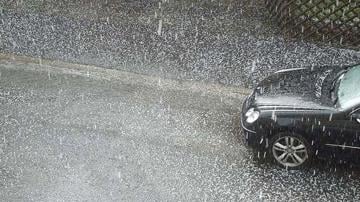With the storm season upon us, we need to take extra care to keep our families safe and our assets protected from the elements. Every time a storm hits, car insurance companies receive many claims for damage from hail, fallen trees and accidents resulting from driving in severe weather. Being prepared for a storm means not taking unnecessary risks and doing everything we can to batten down the hatches.
Parking
If a storm is approaching, the ideal place for your motor vehicle is in the garage. Even here, it’s not always safe, as storms have been known to tear off roofs and bring trees crashing down on houses, but at least in a garage, your car is safe from flying debris. If you don’t have a garage, or you have more than one car, then the front yard is your next best parking option. Provided it is off the street and not parked near large trees with overhanging branches, your vehicle will be afforded some measure of protection.
Hail
Hail is one of the most common causes of damage to motor vehicles. It can smash windscreens and windows and cover a vehicle in highly destructive dents and scratches, sometimes to the extent that the vehicle is written off as being too expensive to repair. Hail damage occurs so frequently that special hail covers are now available on the market to protect vehicles from the worst of a hailstorm.
While nothing short of a suit of armour will fully protect against hailstones the size of cricket balls (as was experienced recently in parts of south Queensland), hail covers are made from toughened weather-resistant materials that cushion the effect of the hailstones striking a car. If a storm is approaching and you don’t own a hail cover, heavy woollen blankets draped over the vehicle would hopefully afford some level of protection, as long as they were well secured.
Flooding
A by-product of a severe storm can often be heavy rain that produces flooding. If you must park your vehicle in the street, make sure you don’t park it near a stormwater drain, as this is where flooding will occur if the drainage system is not able to cope with the downpour. If you live in a flood-prone area, it might be worth moving your vehicle to higher ground, but this should be done well before the storm arrives, not during it, as you should never drive through floodwaters under any circumstances. Even a few inches of water can have the power to sweep a car off the road.
Insurance
If you live in an area where storms are common, make sure you talk to your auto insurance provider about storm damage. Make sure your policy covers you for hail damage and also for flooding. The hard lesson learnt by many after the devastating Brisbane floods was that not all insurers offer the same level of cover.
With our weather patterns changing and meteorologists predicting more frequent and severe storms in the future, it’s more important than ever to ensure our family and important assets are fully protected from the destructive power of nature.



